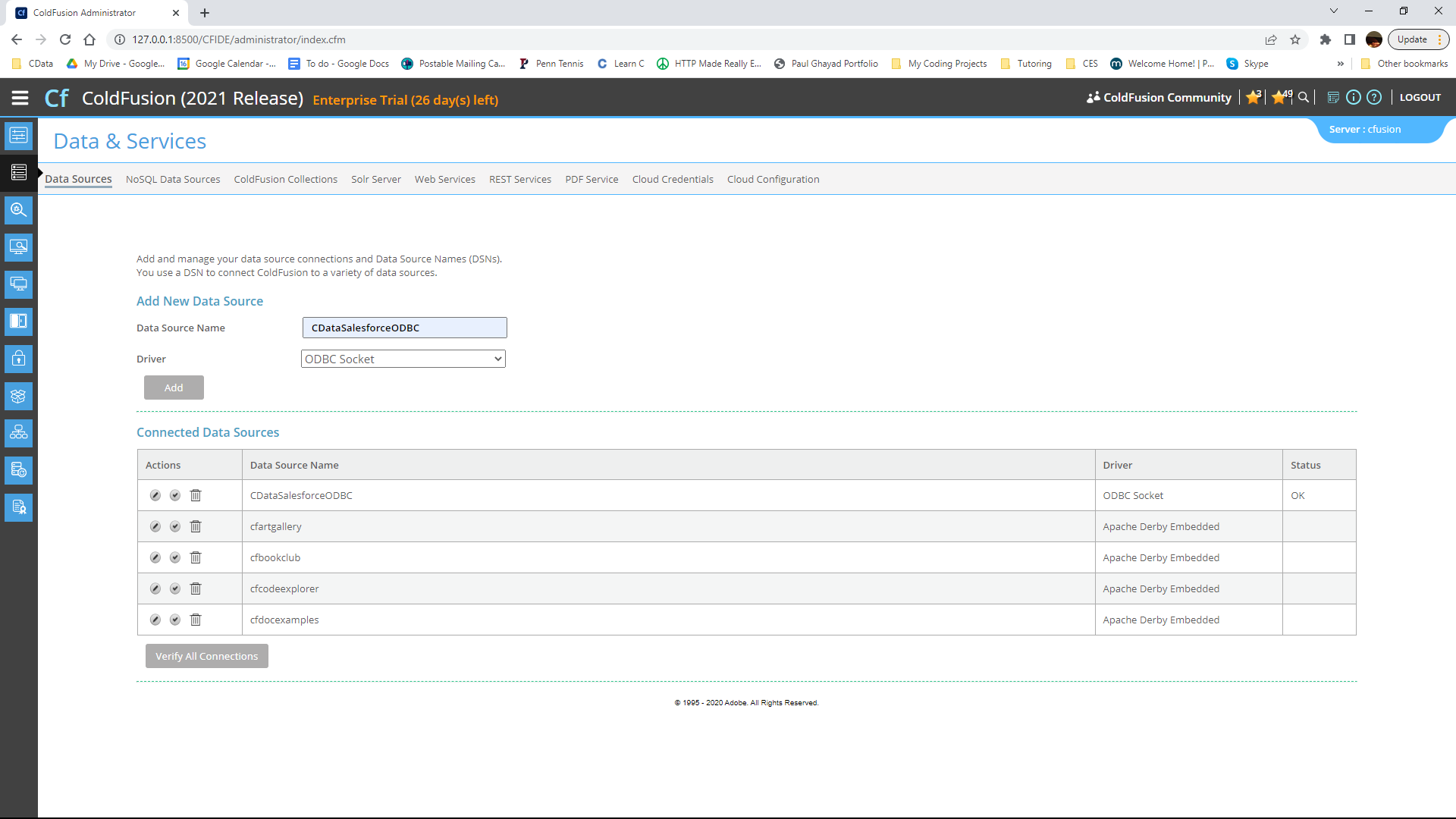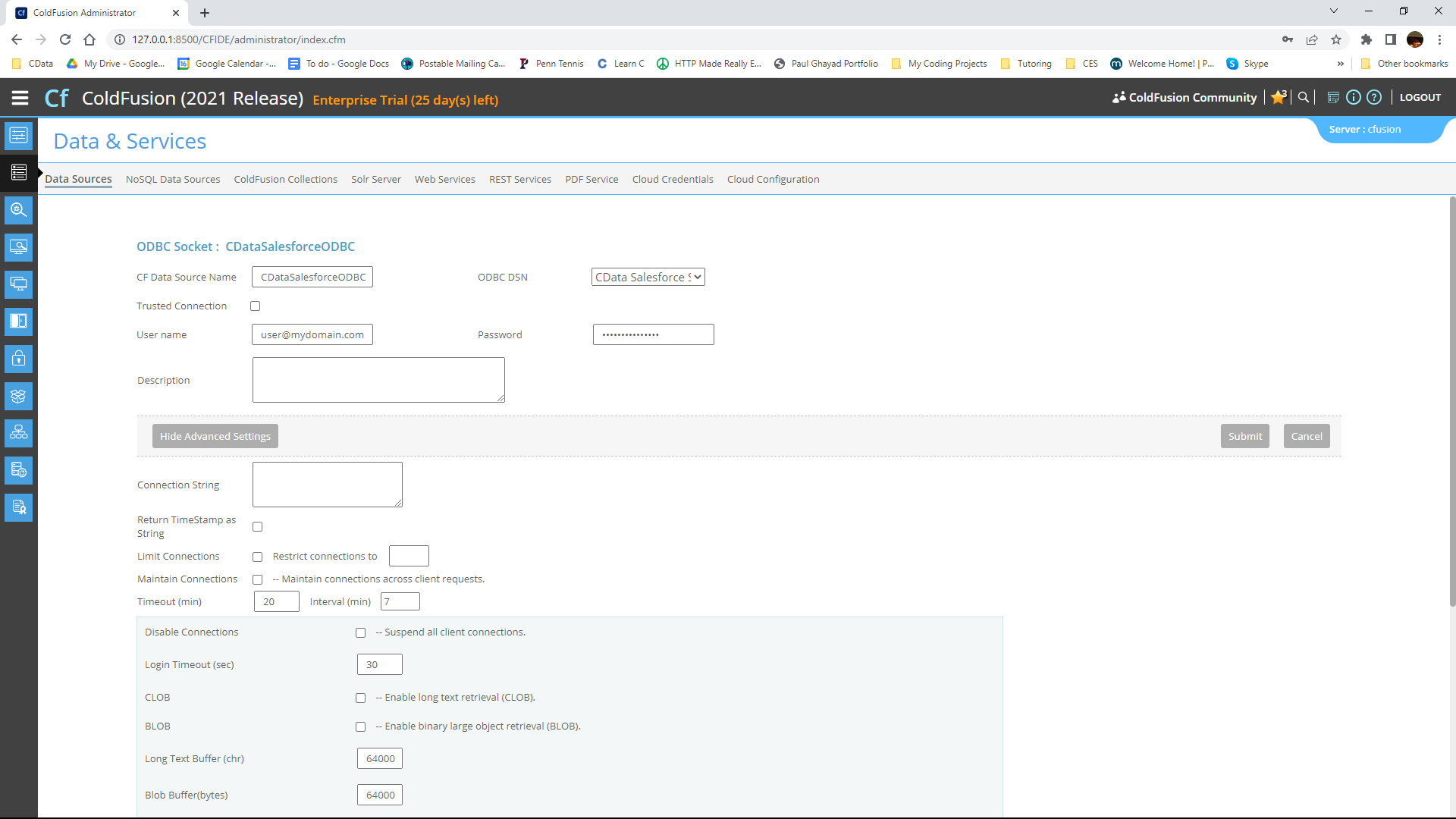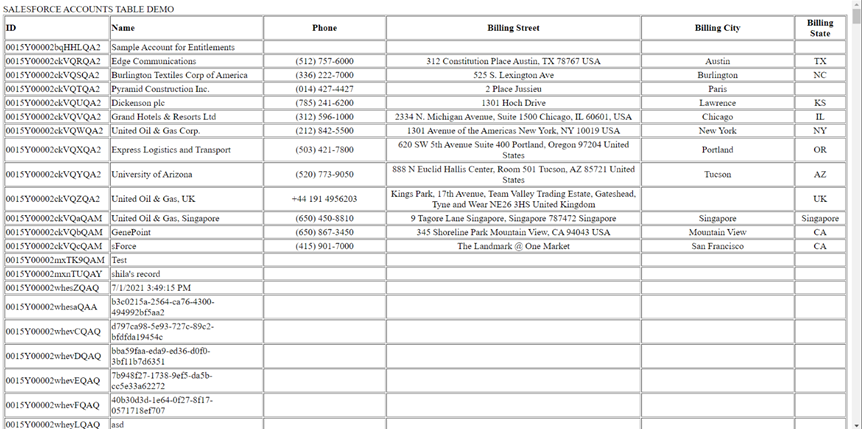Discover how a bimodal integration strategy can address the major data management challenges facing your organization today.
Get the Report →Import Real-Time HubDB Data in ColdFusion to Build Applications
Use CData ODBC drivers to import and use HubDB data in ColdFusion.
Adobe ColdFusion is a web and mobile application development platform. It uses its own scripting language, ColdFusion Markup Language (CFML), to create data-driven websites as well as generate remote services, such as REST. When ColdFusion is paired with the CData ODBC Driver for HubDB, you can link your ColdFusion web and mobile applications to operational HubDB data. This allows for your applications to be more robust and complete. This article details how to use the ODBC driver to create a table populated with HubDB data from within a ColdFusion markup file.
To follow along with this tutorial, you need to install the CData ODBC Driver for HubDB and Adobe ColdFusion.
Configuring the Connection
If you have not already, first specify connection properties in an ODBC DSN (Data Source Name). This is the last step of the driver installation process. You can use the Microsoft ODBC Data Source Administrator to create and configure ODBC DSNs.
There are two authentication methods available for connecting to HubDB data source: OAuth Authentication with a public HubSpot application and authentication with a Private application token.
Using a Custom OAuth App
AuthScheme must be set to "OAuth" in all OAuth flows. Be sure to review the Help documentation for the required connection properties for you specific authentication needs (desktop applications, web applications, and headless machines).
Follow the steps below to register an application and obtain the OAuth client credentials:
- Log into your HubSpot app developer account.
- Note that it must be an app developer account. Standard HubSpot accounts cannot create public apps.
- On the developer account home page, click the Apps tab.
- Click Create app.
- On the App info tab, enter and optionally modify values that are displayed to users when they connect. These values include the public application name, application logo, and a description of the application.
- On the Auth tab, supply a callback URL in the "Redirect URLs" box.
- If you're creating a desktop application, set this to a locally accessible URL like http://localhost:33333.
- If you are creating a Web application, set this to a trusted URL where you want users to be redirected to when they authorize your application.
- Click Create App. HubSpot then generates the application, along with its associated credentials.
- On the Auth tab, note the Client ID and Client secret. You will use these later to configure the driver.
Under Scopes, select any scopes you need for your application's intended functionality.
A minimum of the following scopes is required to access tables:
- hubdb
- oauth
- crm.objects.owners.read
- Click Save changes.
- Install the application into a production portal with access to the features that are required by the integration.
- Under "Install URL (OAuth)", click Copy full URL to copy the installation URL for your application.
- Navigate to the copied link in your browser. Select a standard account in which to install the application.
- Click Connect app. You can close the resulting tab.
Using a Private App
To connect using a HubSpot private application token, set the AuthScheme property to "PrivateApp."
You can generate a private application token by following the steps below:
- In your HubDB account, click the settings icon (the gear) in the main navigation bar.
- In the left sidebar menu, navigate to Integrations > Private Apps.
- Click Create private app.
- On the Basic Info tab, configure the details of your application (name, logo, and description).
- On the Scopes tab, select Read or Write for each scope you want your private application to be able to access.
- A minimum of hubdb and crm.objects.owners.read is required to access tables.
- After you are done configuring your application, click Create app in the top right.
- Review the info about your application's access token, click Continue creating, and then Show token.
- Click Copy to copy the private application token.
To connect, set PrivateAppToken to the private application token you retrieved.
Adding a Data Source and Creating a Table
After creating a DSN, follow the steps below to add a new data source, test our connection to it, create a ColdFusion markup file, and, finally, import HubDB HubDB data and display it in a table in ColdFusion:
-
From the ColdFusion administrator interface, choose Data & Services.
![Selecting Data & Services]()
-
Here, click "Add New Data Source". The data source name can be any name, provided it conforms to the ColdFusion
variable naming conventions. For our ODBC driver, choose "ODBC Socket", then click the "Add" button.
![Adding Data Source Name]()
-
From the ODBC DSN Dropdown menu select CData HubDB Sys. Under the Advanced Settings section, leave the
Connection String blank. Note that any properties specified in this input field will override the ones specified in the
DSN Configuration.
![Populating driver properties]()
-
Now, test the connection by pressing the check mark to the left of the CDataHubDBODBC data source you just created.
When the data source reports an "OK" status, it is ready for use.
![Testing the connection]()
-
Next, create a new ColdFusion Markup file (.cfm) and place it in the wwwroot directory ("C:\ColdFusion2021\cfusion\wwwroot")
for ColdFusion.
The following code queries the data source:
<cfquery name="HubDBQuery" dataSource="CDataHubDBODBC"> SELECT * FROM NorthwindProducts </cfquery>And a CFTable can be used to quickly output the table in HTML:<cftable query = "HubDBQuery" border = "1" colHeaders colSpacing = "2" headerLines = "2" HTMLTable maxRows = "500" startRow = "1"> <cfcol header="<b>PartitionKey</b>" align="Left" width=2 text="PartitionKey"/> <cfcol header="<b>Name</b>" align="Left" width=15 text="Name"/> ... </cftable>Full code, including the HTML portion is available below:<html> <head><title>CData Software | HubDB NorthwindProducts Table Demo </title></head> <body> <cfoutput>#ucase("HubDB NorthwindProducts Table Demo")#</cfoutput> <cfquery name="HubDBQuery" dataSource="CDataHubDBODBC"> SELECT * FROM NorthwindProducts </cfquery> <cftable query = "HubDBQuery" border = "1" colHeaders colSpacing = "2" headerLines = "2" HTMLTable maxRows = "500" startRow = "1"> <cfcol header="<b>PartitionKey</b>" align="Left" width=2 text="PartitionKey"/> <cfcol header="<b>Name</b>" align="Left" width=15 text="Name"/> ... </cftable> </body> </html> -
Finally, run the code in a browser. It produces a table populated with HubDB data!
![Running the code]()
As a note, the CData ODBC Drivers also support parameterized queries using the cfqueryparam element.
For example:
SELECT * FROM Account WHERE name =
Get Started Today
Download a free, 30-day trial of the CData ODBC Driver for HubDB and start building HubDB-connected applications with Adobe ColdFusion. Reach out to our Support Team if you have any questions.










